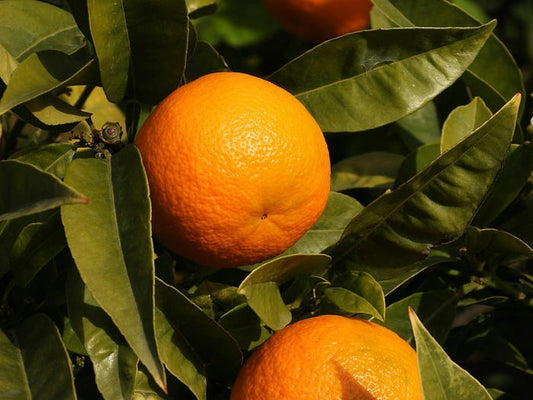
Migraine and Nutrition: Implementing Changes in 10 Minutes
Oksana RozponczykShare
Migraine and Diet
Today, I’d like to take a moment to delve into our understanding of migraines and how healthy nutrition can be a key to alleviating pain. In this article, we’ll explore both the scientific perspective on migraines and practical steps that we can take today to experience relief.
Photo by Anthony Tran on Unsplash
What is Migraine?
Migraine is a type of severe headache that often accompanies symptoms such as nausea, vomiting, and sensitivity to light and sound. Migraines are quite common and can significantly impact the daily functioning of those affected by them.
Symptoms of migraine can vary, but typically include:-
Headache: This is usually an intense pain on one side of the head, although it can also manifest on both sides. Migraine pain is often throbbing.
-
Nausea and Vomiting: Many people with migraines experience nausea, and some may even vomit.
-
Sensitivity to Light, Sound, and Smells: Light, sounds, and smells can be particularly bothersome during a migraine attack.
- Aura: Some individuals experience an “aura” before the headache begins. An aura involves changes in perception, such as tingling in the hands or face, visual disturbances, or difficulties in speaking.
Not everyone with migraines experiences all of these symptoms, and they can often be different in various attacks. The causes of migraines are not fully understood, but they are believed to be associated with genetic factors, hormones, changes in blood vessels in the brain, and certain environmental factors.
The treatment of migraines includes both pain-relieving medications and preventive strategies aimed at reducing the frequency and intensity of migraine attacks. Individuals who suspect they suffer from migraines should consult with a doctor and/or clinical dietitian for diagnosis and the development of a treatment plan.
Migraine vs. Headache
Migraine and a common headache differ in many aspects, encompassing both symptoms and causes. Below, I outline the key distinctions.
 Photo by Usman Yousaf on Unsplash
Photo by Usman Yousaf on Unsplash
Intensity of Pain:
- Migraine: Characterized by severe, throbbing head pain that can last from a few hours to several days. It’s usually one-sided but may also involve the entire head.
- Common Headache: Typically a mild to moderate pain that is more dull and non-throbbing.
Additional Symptoms:
- Migraine: Often accompanied by symptoms such as nausea, vomiting, sensitivity to light (photophobia), and sounds (phonophobia). Some experience “auras” — changes in perception before the headache onset.
- Common Headache: Usually occurs on its own, without additional symptoms.
Frequency of Attacks:
- Migraine: Migraine attacks can be sporadic or frequent, varying from person to person. Some experience migraines only occasionally, while others may have frequent attacks.
- Common Headache: May occur frequently, but typically lacks the recurring nature of a migraine attack.
Causes:
- Migraine: The causes of migraines are not fully understood, but genetic factors, hormonal changes, stress, diet, and other environmental factors may play a role.
- Common Headache: Can be caused by factors such as fatigue, tension, stress, weather changes, or simple infections.
Reaction to External Stimuli:
- Migraine: Individuals with migraines are often highly sensitive to external stimuli such as light, noise, or smells.
- Common Headache: Typically does not elicit such a strong reaction to these stimuli.
In case of concerns related to headaches, it is always advisable to consult with a doctor and/or a dietitian who can accurately diagnose the type of headache and plan appropriate treatment/dietary interventions.
 Photo by Usman Yousaf on Unsplash
Photo by Usman Yousaf on Unsplash
Motivation for Change: Let’s Begin Our Health Journey
Before you embark on the path of dietary changes in the context of migraines, let’s reflect on why it’s worth undertaking this journey. Motivation is a key element in effectively managing migraines. Here are a few thoughts that might serve as sparks of inspiration for you:
-
Better Nutrition, Fewer Migraines: Research indicates that diet can impact the frequency and intensity of migraine attacks. Ensure that your diet becomes an ally in the battle against pain.
-
Healthy Body, Healthy Mind: Proper nutrition provides nutrients that support brain function. This can contribute to alleviating migraine symptoms, especially if they are linked to specific nutritional deficiencies.
-
Reducing Trigger Factors: Dietary changes can help identify and reduce potential trigger factors for migraines. It’s a step toward understanding what supports or complicates your body’s condition.
-
Mental and Emotional Well-being: Diet not only affects the body but also mental health. Improving your diet can influence mood, which is crucial, especially in conditions like migraines that often combine pain with emotional challenges.
-
Long-Term Responses to Migraines: A proper diet is an investment in the future. Reducing inflammatory components in the diet can decrease the risk of future migraine episodes.
-
Community Support: Making the decision to change your diet can be challenging, but when you share your goals with others, you build a community of support. Together, we can navigate the tougher stages of this journey.
- Find Joy in Eating: Dietary changes aren’t just about restrictions. It’s also an opportunity to discover new flavors and foods that not only promote health but also bring pleasure.
Following the path of dietary changes with motivation and awareness, we can encounter a more balanced life despite the challenges of migraines. It’s a journey that starts with small steps. Are you ready to begin this unique health journey?
Practical Tips for Everyday: 10-Minute Solutions
When it comes to making changes in your diet, it doesn’t always have to mean a revolution in your meal plan. Sometimes, it’s the small yet consistent steps that make the biggest difference.
What are some small but effective changes you can make today? Let’s explore how practical tips can transform your eating habits.
 Photo by Resume Genius on Unsplash
Photo by Resume Genius on Unsplash
Here are a few 10-minute solutions that can effectively improve your eating habits and alleviate migraine pains:
-
Conscious Eating: Distraction-Free Principle: Allocate 10 minutes for peaceful meal consumption, eliminating all distractions. Focus on the taste and consistency of your food, deriving joy from each bite.
-
Balanced Snacks: Snack Planning: Spend 10 minutes daily planning healthy snacks for the entire day, thereby reducing the risk of reaching for unhealthy options.
-
Citrus-Infused Water: Healthy Hydration Ritual: Add slices of lemon or pieces of other fruits to your water. This is a simple but effective method to enhance the taste of water, encouraging increased fluid intake.
-
Post-Meal Stroll: 10-Minute Break for a Walk: Dedicate 10 minutes after meals to a short walk. This not only aids digestion but is also an excellent way to refresh your mind.
- Herb Experimentation: Incorporate Herbs into Dishes: Spend 10 minutes experimenting with adding fresh herbs to your meals. This not only enriches the taste but also provides additional nutritional elements.
 Photo by Mae Mu on Unsplash
Photo by Mae Mu on Unsplash
-
Quick Home Workout: 10-Minute HIIT Workout: Find short online exercises and dedicate 10 minutes daily to an intensive workout. This can boost your metabolism and overall well-being.
-
Week-ahead Meal Planning: Swift Meal Planning: In 10 minutes, outline your meals for the upcoming week. This facilitates shopping and eliminates impulsive dietary decisions.
-
Healthy Break Snacking: Prepare a Healthy Snack: Spend 10 minutes preparing a nutritious snack for the day to avoid reaching for unhealthy options during work.
-
Fruits as Dessert: Swap Sweets for Fruit: Allocate 10 minutes to replace sweets with fruits. It’s a simple step towards reducing sugar intake.
- Reflection before Bed: 10 Minutes Before Bed for Reflection: Before sleeping, take 10 minutes to reflect on your dietary choices for the day and consider improvements for the next day.
 Photo by Brooke Lark on Unsplash
Photo by Brooke Lark on Unsplash
Implementing these small changes each day can significantly enhance your dietary habits, and at the same time, it doesn’t require a great deal of time. These are small steps, but when accumulated, they can work wonders for your health.
How can a dietitian assist me with migraine pain? A dietitian’s role in managing migraines involves identifying dietary factors that may contribute to headache attacks and introducing changes in the diet that support overall health and reduce migraine risk factors. Collaborating with a dietitian can be a crucial element of a comprehensive approach to migraine management.
Therefore, I encourage you to delve into the topic of migraines and nutrition and consider the changes we can incorporate into our daily lives to minimize the impact of migraines. Ready? Let’s embark on this journey together!
 Photo by Fuu J on Unsplash
Photo by Fuu J on Unsplash



